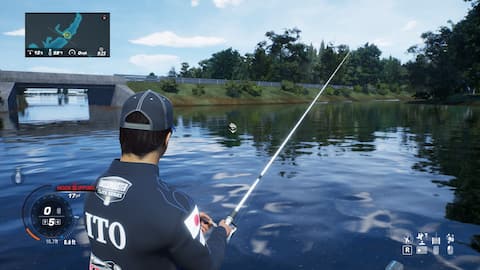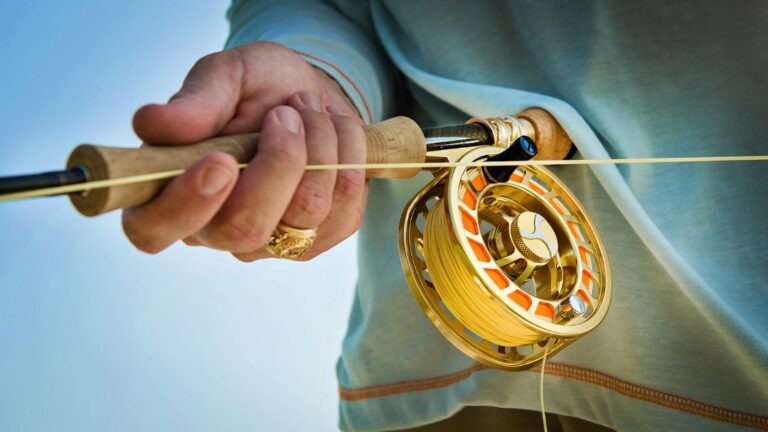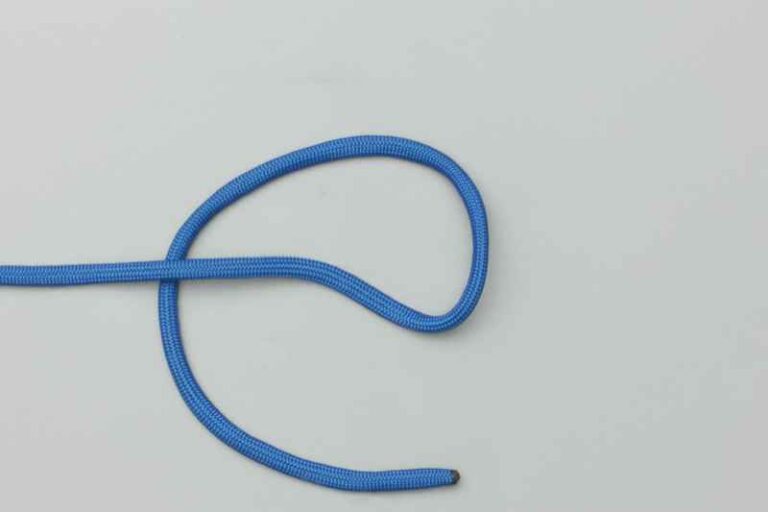How Your Cost to Start Fishing Can Be Less Than $50: Proven Secrets Revealed!
Your cost to start fishing can be less than $50, providing an affordable and accessible way to enjoy this recreational activity. By carefully selecting basic equipment and opting for budget-friendly alternatives, you can embark on your fishing journey without breaking the bank.
Whether you’re a beginner or an experienced angler, fishing is a popular pastime that offers relaxation, excitement, and a chance to connect with nature. However, many people assume that it requires expensive gear and significant upfront investment. Fortunately, this is not always the case.
With some smart choices and a bit of research, you can start fishing for less than $50. This article explores various cost-effective options and tips to help you embark on your fishing adventure without emptying your wallet. So, let’s dive in and discover how you can enjoy this beloved pastime on a budget.
1. Choosing The Right Fishing Gear
When it comes to starting fishing, choosing the right gear is crucial. Many novice anglers are discouraged by the misconception that fishing can be an expensive hobby. However, with careful research and smart choices, you can begin your fishing journey for less than $50. In this section, we’ll explore how you can select affordable fishing gear without compromising on quality.
Researching Affordable Fishing Gear Options
Researching different options is key to finding affordable fishing gear. With the rise of e-commerce platforms, it’s easier than ever to discover a wide range of fishing equipment at competitive prices. Take the time to browse through online marketplaces, specialized fishing stores, and even second-hand platforms to find great deals on fishing gear. Look for transparent reviews from fellow anglers to gauge the performance and durability of each product.
Understanding The Basic Fishing Equipment Needed
Understanding the basic fishing equipment needed will help you make informed decisions when purchasing your gear. The essentials include a fishing rod, reel, fishing line, hooks, and bait. To keep costs down, consider starting with a lightweight and versatile spinning rod and reel combo. These combos often come pre-spooled with fishing line, saving you both time and money. As you gain more experience, you can expand your gear collection to cater to specific fishing techniques or target species.
Evaluating Quality Versus Cost
When it comes to fishing gear, quality and cost often go hand in hand. While it’s easy to be enticed by flashy and expensive gear, it’s important to evaluate the quality of each product before making a purchase. Keep in mind that higher price tags don’t always guarantee superior performance. Read product descriptions carefully, paying attention to materials, construction, and customer reviews. Balancing quality and cost will help you find fishing gear that is both affordable and reliable.
Exploring Budget-friendly Fishing Gear Recommendations
If you’re looking for specific recommendations, here are some budget-friendly fishing gear options to consider:
| Item | Price Range |
|---|---|
| Berkley Cherrywood HD Spinning Rod | $20-$30 |
| Penn Pursuit III Spinning Reel | $30-$40 |
| Sufix Elite Monofilament Fishing Line | $5-$10 |
| Eagle Claw Baitholder Hooks (Pack of 50) | $5-$10 |
| Live or artificial bait (price varies) | $5-$20 |
These recommendations provide a solid foundation for your fishing gear setup without breaking the bank. Remember to consider the specific needs of your fishing environment and target species when making your purchases.
2. Essential Fishing Accessories For Under $50
When starting a new hobby like fishing, it’s natural to worry about the initial costs. However, you’ll be glad to hear that getting started with fishing doesn’t have to break the bank. With just $50, you can get your hands on some essential fishing accessories that will have you headed to the water in no time. In this article, we’ll explore the must-have accessories you can obtain for under $50, including identifying the necessary items, finding affordable bait and tackle options, exploring cheap alternatives for fishing line and hooks, and understanding the importance of fishing licenses and permits.
Identifying Must-have Fishing Accessories
Before you head out on your fishing adventure, it’s important to make sure you have the must-have accessories in your tackle box. These essentials will ensure you are well-prepared and ready to reel in your first catch. Here are some of the must-haves to consider:
- Fishing Rod and Reel Combo
- Tackle Box
- Fishing Line
- Hooks
- Bobbers
- Sinkers
- Pliers
Finding Affordable Bait And Tackle Options
Bait and tackle can quickly add up in cost if you’re not careful. However, with a little research and resourcefulness, you can find affordable options that won’t break the bank. Here are a few tips to help you save money on bait and tackle:
- Consider using live bait instead of expensive artificial lures. Live bait can be more cost-effective and just as effective in attracting fish.
- Look for discounts and deals at local tackle shops or online retailers. Keep an eye out for sales and clearance items that can help you save a few bucks.
- Consider joining fishing forums or online communities where fellow anglers often share tips and advice on finding affordable bait and tackle.
Exploring Cheap Alternatives For Fishing Line And Hooks
Fishing lines and hooks are essential components of your fishing setup, but they can sometimes be pricey. Luckily, there are cheap alternatives available that can fit within your $50 budget. Here are a few options to consider:
| Alternatives | Benefits |
|---|---|
| Monofilament Fishing Line | Cost-effective and durable |
| Fluorocarbon Fishing Line | Offers excellent invisibility in the water |
| Knotless Fishing Hooks | Easier to handle and less likely to damage the fish |
| Barbless Fishing Hooks | Easier to remove from the fish without causing harm |
Considering The Importance Of A Fishing License And Permits
Don’t forget that having a valid fishing license and permits is crucial when setting out to fish. Not only does it help in maintaining the environment, but it also ensures you’re adhering to regulations and avoiding fines. The cost of fishing licenses and permits can vary depending on where you live, so be sure to check with your local fish and wildlife department for the most up-to-date information. Additionally, many fishing licenses are valid for a full year, making them a worthwhile investment for multiple fishing trips throughout the year.
3. Budget-friendly Fishing Locations
Fishing is not only a rewarding hobby but can also be a budget-friendly one. You may think that fishing requires expensive gear and costly trips, but that’s not always the case. In this section, we will explore three ways you can find affordable and accessible fishing spots to keep your costs under $50. Let’s dive in!
H3discovering Accessible Fishing Spots Near You/h3
When it comes to fishing on a budget, the first step is to discover fishing spots near your area. Luckily, you may be surprised to find that there are numerous locations within a short distance from your home. To find these hidden gems, consider the following:
- Check your local parks or recreation areas. Many of these have ponds, lakes, or streams that are open to the public.
- Research nearby rivers, reservoirs, or coastal areas that allow fishing without requiring a special permit or fee.
- Ask fellow anglers or fishing enthusiasts in your community for recommendations. They may have insider knowledge of some lesser-known fishing spots that offer good catches.
H3exploring Public Fishing Areas With Low Or No Entry Fees/h3
If you are looking for budget-friendly fishing locations, public fishing areas with low or no entry fees are your best option. These areas are typically managed by local authorities or government agencies and offer accessible and affordable fishing opportunities. Here are some ways to explore these locations:
- Visit your state or country’s fish and wildlife department website. They often provide information and maps of public fishing areas, along with any associated costs.
- Consider purchasing an affordable fishing license, which can grant you access to a variety of public fishing spots.
- Look for community fishing ponds or lakes that are stocked with fish and allow fishing without any additional charges.
H3researching Inexpensive Fishing Destinations/h3
While local fishing spots can offer great budget-friendly options, sometimes you may crave a change of scenery. In such cases, researching inexpensive fishing destinations can help you find affordable fishing getaways. Consider the following:
- Look for state parks or national wildlife refuges that offer fishing opportunities. These locations often have nominal entry fees and provide a chance to explore new environments.
- Research fishing resorts or campsites that offer affordable accommodations near fishing hotspots. This way, you can enjoy a weekend getaway without breaking the bank.
- Consider fishing in nearby small towns or rural areas, which tend to have lower costs compared to popular tourist destinations.
By considering these budget-friendly fishing locations, you can experience the joy of fishing without emptying your wallet. Always remember to check local fishing regulations, ensure you have the necessary permits or licenses, and practice responsible fishing techniques. With a little research and planning, you can cast your line into the waters without breaking the bank.
4. Techniques To Save Money On Bait And Lures
Fishing can be an incredibly enjoyable and relaxing hobby, but the costs associated with it can sometimes deter people from taking it up. However, with a little bit of knowledge and resourcefulness, you can minimize your spending on bait and lures without compromising your chances of a successful catch. In this section, we will explore four techniques that can help you save money on bait and lures.Learning About Diy Bait Options
One of the most effective ways to cut down on your fishing expenses is to explore the world of do-it-yourself (DIY) bait options. There are plenty of resources available online that can teach you how to make your own bait using simple, inexpensive materials. Whether it’s creating your own dough bait using flour and cornmeal, or concocting a homemade fish attractant using vinegar and garlic, DIY bait options can be both cost-effective and fun to experiment with. By learning these techniques, you not only save money but also gain a deeper understanding of the different types of bait and their effectiveness in attracting fish.Exploring Effective Natural Bait Alternatives
Another technique to save money on bait is by exploring natural bait alternatives. Instead of relying solely on store-bought bait, consider using natural bait options that can be found in your surroundings. For example, worms, crickets, grasshoppers, and even small insects can be effective lures and are often readily available without any cost. By harnessing the power of nature, you not only save money but also increase your chances of catching a wide variety of fish species. Remember to check your local regulations and restrictions before collecting any natural bait, as some areas may have restrictions in place.Using Inexpensive Fishing Lures
Investing in expensive fishing lures is not always necessary. There are plenty of affordable options available in the market that are just as effective as their pricier counterparts. Assess your fishing environment and target fish species to determine the most suitable and cost-effective fishing lures for your needs. Look for sales, discounts, or clearance sections in fishing tackle shops, where you can often find quality lures at a fraction of the original price. Additionally, consider purchasing second-hand lures from online platforms or local fishing communities, as this can be a great way to save money while still acquiring reliable fishing gear.Maximizing The Use Of Bait And Lures
Once you have acquired your bait and lures, it’s essential to maximize their use to get the most out of your investment. Proper storage and maintenance of your fishing tackle not only prolong their lifespan but also ensure consistent performance on your fishing trips. Ensure that your bait and lures are kept in a cool, dry, and organized manner to prevent damage or deterioration. Additionally, remember to remove any excess bait from your hooks at the end of each fishing session to prevent wastage and preserve your lures for future use. In conclusion, by learning about DIY bait options, exploring natural bait alternatives, using inexpensive fishing lures, and maximizing their use, you can significantly reduce your spending on bait and lures without compromising your fishing experience. These techniques will not only help you save money but also enable you to adapt and experiment with different bait and lures, enhancing your chances of a successful catch without breaking the bank. So why wait? Start implementing these cost-saving techniques and enjoy the wonderful world of fishing without worrying about the price tag!5. Money-saving Tips And Tricks For Fishing Enthusiasts
When it comes to fishing, many people assume that it requires a hefty investment. But what if I told you that you can start fishing for less than $50? Yes, it’s true! In this section, we will explore some money-saving tips and tricks for fishing enthusiasts who are on a tight budget. From budget-friendly fishing trip planning to making the most out of discounted fishing supplies and sales, we’ve got you covered. Let’s dive in!
Budget-friendly Fishing Trip Planning
Planning a fishing trip doesn’t have to break the bank. By being mindful of your expenses and making smart choices, you can enjoy a memorable fishing experience without emptying your wallet. Here are a few budget-friendly fishing trip planning tips:
- Research affordable fishing locations or public fishing spots in your area.
- Consider camping or staying in budget-friendly accommodations near the fishing spot.
- Plan your trip during off-peak seasons when prices are typically lower.
- Prepare your own meals and snacks instead of relying on expensive restaurants.
By incorporating these tips into your fishing trip planning, you can save a significant amount of money while still enjoying the thrill of the catch.
Making The Most Out Of Discounted Fishing Supplies And Sales
Investing in high-quality fishing gear is important, but that doesn’t mean you have to pay a fortune for it. Here are some ways to make the most out of discounted fishing supplies and sales:
- Keep an eye on seasonal sales, clearance racks, and online discounts for fishing equipment and accessories.
- Consider purchasing second-hand fishing gear from reputable sources such as online marketplaces or local fishing clubs.
- Join loyalty programs or subscribe to newsletters of fishing stores to receive exclusive discounts and promotions.
By being patient and taking advantage of discounted fishing supplies and sales, you can build a well-equipped fishing arsenal without breaking the bank.
Maintaining And Preserving Fishing Gear To Increase Its Lifespan
Your fishing gear is an investment, and it’s essential to take care of it to ensure it lasts for years to come. Here are some tips for maintaining and preserving your fishing gear:
- After each fishing trip, clean your gear thoroughly using appropriate cleaning solutions and store them in a dry and safe place.
- Regularly inspect your fishing equipment for any signs of wear and tear, and address any issues promptly.
- Follow manufacturer guidelines for maintenance and lubrication of reels, rods, and other gear components.
By properly maintaining and preserving your fishing gear, you can extend its lifespan and avoid unnecessary expenses in the long run.
Engaging In Fishing Communities For Cost-saving Advice And Deals
Fishing communities are treasure troves of valuable information and resources for cost-saving advice and deals. Here’s how you can engage in fishing communities:
- Join online forums, social media groups, and discussion boards focused on fishing to connect with like-minded individuals.
- Share your fishing experiences and learn from others’ experiences to discover insider tips and tricks.
- Participate in fishing community events and workshops where you can meet fellow anglers and potentially find exclusive deals.
By actively engaging in fishing communities, you can stay up to date with the latest cost-saving advice, find great deals on fishing gear, and foster valuable connections with other fishing enthusiasts.
Conclusion
To sum up, starting fishing doesn’t have to break the bank. With the right approach, you can get started for less than $50. By carefully selecting affordable gear, using cost-effective bait options, and taking advantage of free fishing opportunities, you can enjoy this hobby without hurting your wallet.
So grab your fishing rod and tackle box, and immerse yourself in the world of fishing without the worry of high costs. Happy fishing!






